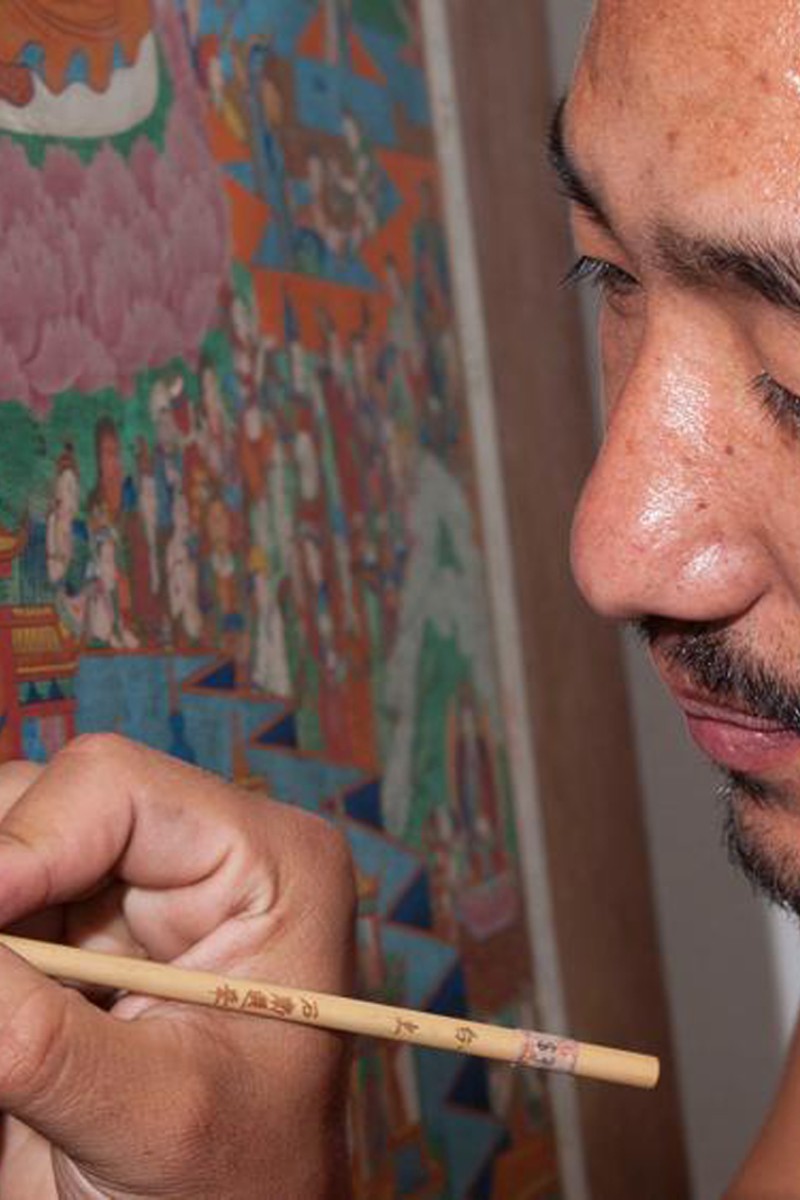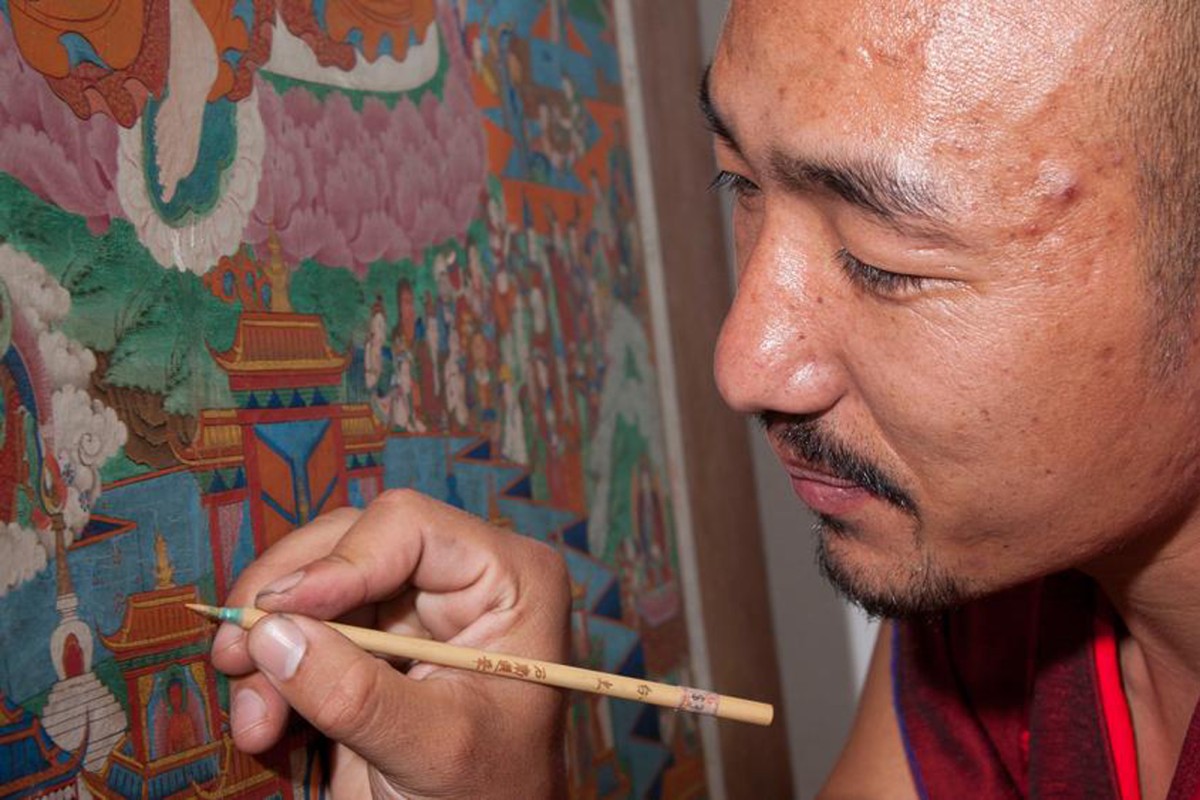
Princess of Bhutan tells us the history behind thangka paintings and why they need saving
 Restoring each thangka is a labour of love and so much more than a work of art.
Restoring each thangka is a labour of love and so much more than a work of art.Often known as the happiest country in the world, Bhutan – a nation tucked away in the Himalayan mountains – is home to thousands of priceless thangka paintings.
Thangkas are Tibetan paintings of Buddhist gods, on either cotton or silk which play an important role in Buddhism. The word “thangka” literally means “rolled up”. They earned this name because they are only brought out at special occasions such as weddings or major Buddhist festivals. Because they are rolled up and carefully stored for much of the time, they can remain in very good condition for a long time. Some thangkas date back to the 11th century.
But even though they are well looked after, the thangkas have faded through the years. Last month, Princess Ashi Kesang Choden T. Wangchuk of Bhutan came to Hong Kong to talk to the Asia Society about efforts to restore these paintings.
Princess Aisha explains that through the years, different people have tried to restore these antique treasures.
In the US, some conservationists glued the thangka onto glass, so that viewers could see the back as well as the front. But this ignores the traditional purpose, which is for them to be rolled and stored.
Some used Chinese and Japanese methods of restoration, using paper to thicken the thangkas. But that crushes and flattens the art.
Others used synthetic paint instead of natural paint, changing the cultural meaning.
The problem is that the only people who truly understand thangkas and how they’re made are the monks who look after them.
“There are specialists who conserve art in the West and the rest of the world, but they don’t understand the culture, traditions, or the expression of its creators. The monks fill this gap not only in Bhutan but the whole [Himalayan] region,” says Princess Aisha.
But monks are not skilled artists, and aren’t trained in how to preserve these works of art.
The need to repair them has become even more urgent in recent years due to natural disasters.
“In 2008, an earthquake with a 6.8 magnitude destroyed almost 90 per cent of monasteries in Bhutan,” says Princess Aisha. “The monks who look after the thangkas were desperate for help to restore their paintings.”
That’s where Ephraim “Eddie” Jose comes in. Since 2003, Ephraim, a specialist in conserving Asian art, has been going to the Bhutanese monasteries to teach monks how to properly restore them. And the results are astonishing.
“The difference is amazing – the monks work on restoring them for months, years, even. Some thangkas that were very faded now look as good as new,” says Princess Aisha.
It can take up to three years to restore just one. So far, Ephraim and his team have restored more than 90.
You might be wondering why it’s so important to preserve thangkas, when artists can just create new ones. But compared to the ones painted before the 17th or 18th century, thangkas today are created as souvenirs for tourists. And the difference is quite obvious.
“Traditionally the paintings have a lot of dimension and depth to them. But the new ones are quite flat. The colours are different, too – instead of using earth pigments, artists nowadays use mostly acrylic or synthetic paint,” says Princess Aisha.
Some of the modern art pieces even feature subjects wearing sunglasses, which disrespects the gods, says Princess Aisha.
This highlights why their preservation is so important. It’s about far more than just brightening the paintings. It’s about preserving culture and traditions.
“There are Tibetan, Indian and Chinese thangkas, and they are all different and represent their own traditions. For instance, the Tibetan ones have a darker landscape, whereas those from India depict their own landmarks,” says Princess Aisha.
“The monks are not just conserving objects of art or worship, they are actually bringing traditions and values back to life – a way of life that’s been practised by the Bhutanese for thousands of years.”
